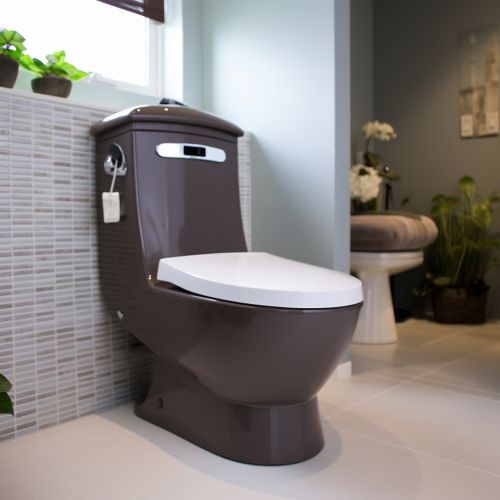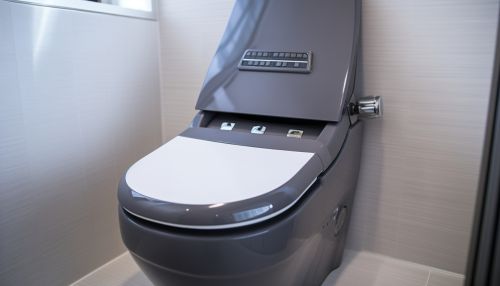Dual flush toilet
Introduction
The dual flush toilet is a type of toilet that uses two buttons or handles to flush different amounts of water. It is designed to save water by providing a choice between a full or a partial flush. This type of toilet is a significant development in the field of water conservation and sustainable living.


History
The dual flush toilet was first introduced in the market by a Japanese company, TOTO Ltd., in 1960. However, it was not until 1980 when it gained popularity, thanks to the efforts of Australian inventor Bruce Thompson and his team at Caroma. They developed a two-button flushing system that used significantly less water than traditional single flush toilets. This innovation was a response to Australia's water scarcity issues and has since become a standard feature in many countries around the world.
Design and Operation
A dual flush toilet differs from a standard toilet in its flushing mechanism. Instead of a single lever, it has two buttons or handles. One button is for the full flush, which uses the entire capacity of the water in the tank. The other button is for the partial flush, which uses less water and is intended for liquid waste.
The design of the dual flush toilet allows for the separation of solid and liquid waste, which require different amounts of water to be effectively flushed away. The full flush typically uses around 1.6 gallons of water, while the partial flush uses as little as 0.8 gallons. This can result in significant water savings over time.
Benefits
The primary benefit of a dual flush toilet is its potential for water conservation. By giving users the choice between a full and partial flush, it reduces the amount of water used in flushing. This can lead to significant savings on water bills and contribute to environmental sustainability.
In addition to its water-saving benefits, a dual flush toilet can also improve the efficiency of a home's plumbing system. By using less water per flush, it reduces the risk of clogs and the need for frequent maintenance.
Installation and Maintenance
Installing a dual flush toilet is similar to installing a standard toilet. It requires a water supply, a waste pipe, and a vent pipe. However, due to its unique flushing mechanism, it may require additional components or adjustments during installation.
Maintaining a dual flush toilet is also similar to maintaining a standard toilet. Regular cleaning and occasional replacement of parts are necessary to ensure its proper functioning. However, due to its water-saving features, a dual flush toilet may require less frequent maintenance compared to a standard toilet.
Challenges and Criticisms
Despite its benefits, the dual flush toilet is not without its challenges and criticisms. Some users find the two-button system confusing or inconvenient to use. There is also a concern about the effectiveness of the partial flush in removing waste, leading to multiple flushes and negating the water-saving benefits.
Furthermore, the initial cost of a dual flush toilet is typically higher than a standard toilet. This can be a deterrent for some homeowners, despite the potential savings on water bills in the long run.
Conclusion
The dual flush toilet is a significant innovation in the field of water conservation. Despite its challenges, it offers a practical solution to the global issue of water scarcity. With further improvements and widespread adoption, it can contribute significantly to sustainable living and environmental preservation.
